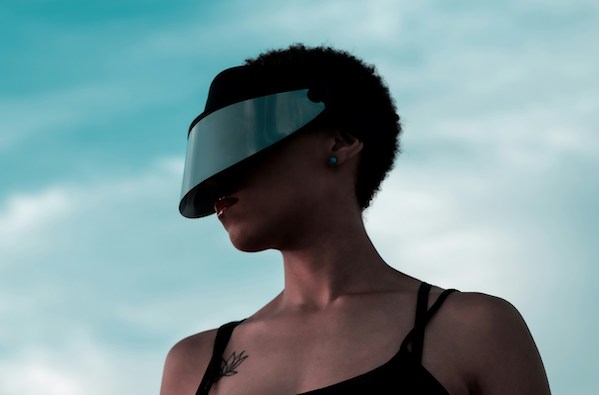It has always been rare for young women to see themselves represented in sci-fi, especially if they are queer.
Luckily, this is beginning to change.
In the face of multiple political attacks on the rights of queer youth, queer representation across genres is more important than ever. For sci-fi lovers, I’ve compiled this list of four films and TV series with young lesbian, bisexual, and transgender women. The characters and stories in the list are all beautifully different from one another and multi-layered, so you can truly dig in and enjoy them all.
1. The New Mutants (film  2020)
2020)
Like many other stories based on Marvel’s X-Man comics, The New Mutants shows complicated social issues in a simple way.
The story begins with the scene when the main character, a Cheyenne Native American girl named Dani Moonstar, loses her father in a tornado that also destroys her entire reservation. Dani passes out, and opens her eyes to find she’s in a secret medical facility with another five young mutants. Dani quickly bonds with Rahne Sinclair, a white girl with the ability to turn herself into a wolf. Rahne was targeted by her extremely conservative Christian community. The two fall in love and take on the mission of fighting not just with adults who want to use mutant kids but also with their own traumas and fears.
This movie resonates with me because, just like Rahne, I came from a religious family.
Also, like Dani, I sometimes struggle to keep my fears under control. Because of my Complex Post-Traumatic Stress Disorder, I made a lot of decisions that harmed me and the people around me when I couldn’t control my reactions to triggers.
The New Mutants is a gripping sci-fi/horror story about religious trauma, intersectionality, sapphic love, and the power of self-acceptance.
2. Everything Everywhere All at Once (film  2022)
2022)
Middle-aged Chinese immigrant, Evelyn Quan Wang, is simultaneously dealing with the IRS auditing her business, divorce papers from her husband, and a visit from her demanding father. On top of this, she suddenly finds out about the existence of parallel universes and is tasked with saving her current reality.
But there is a major problem: to succeed, Evelyn needs to accept her daughter Joy’s homosexual identity.
Will Evelyn ultimately choose to be a better parent to Joy than her father was to her?
This story also celebrates an ADHDer’s way of thinking, which could be an additional bonus for neurodivergent viewers.
This is a funny, original, and a little bit rude sci-fi comedy. But for me, it is, first and foremost, a story about generational trauma and the importance of questioning your parental ambitions for the sake of your children.
3. Sense8 (tv show  2015-2018)
2015-2018)
Eight strangers from different parts of the globe suddenly discover that they can telepathically communicate with each other, and form a cluster of “sensates”. One of them is Nomi Marks, a white out-and-proud transgender lesbian, political activist, and hacker, who lives in San Francisco with her Black girlfriend Amanita Caplan.
After Nomi became able to share her thoughts, feelings, and skills with other sensates, she would need all help from them – and from her loving girlfriend – to overcome Whispers, a mysterious man who targeted people with unusual abilities. And, worst of all, it seems like Nomi’s privileged transphobic mother is on his side.
As a transgender person, it was very refreshing to see Nomi as a trans* character whose story is not fully dedicated to the fact that they are trans*.
It is also worth mentioning that Nomi was not only created by transgender filmmakers, the brilliant Wachowskis sisters (authors of the Matrix movies), but she was also portrayed by transgender actress Jamie Clayton.
4. Doctor Who (tv show  Season 10; 2017)
Season 10; 2017)
Do you want to see a Black lesbian main character in a legendary sci-fi series that has been on British television since the 1960s? Then Doctor Who’s 10th series (or 10th season for those of us in the U.S.) is for you. The good news is that if you have never watched Doctor Who but don’t care much about continuity, you may watch this season without watching previous ones.
Bill Potts is working in a university cafeteria when she meets an ancient alien time traveler known as “the Doctor.’ After surviving a mysterious adventure, she becomes his new companion, traveling with him in space and time. Bill is easygoing, funny, and nice, and her queerness is obvious from her very first episode. She is definitely one of my favorite of the Doctor’s companions, after Amy Pond.
This is actually how I began to watch Doctor Who — I started with the fifth series with Amy, but then I loved the show and went back to earlier series to better understand the Doctor Who universe. The new companion basically means the show gets a new main story arc (even for episodes that are tied together,) and most episodes are completely unconnected to one another.
Doctor Who is perfect for everyone who adores time-traveling.
Over the years, I’m sure that many geeky women have been frustrated that the main characters from all their favorite sci-fi stories looked like a boring army of clones. For decades, sci-fi movies mostly told stories about white, straight, middle-aged men. Sci-fi classics not only lack representation of women but of anyone who lives an intersectional reality.
However, the mass culture of today more accurately reflects the reality of the diversity of humankind. The main characters of the stories on this list come from different ethical and cultural backgrounds and have different personalities and strengths. These films are not just about adventures, time-traveling, and superhuman abilities, but also about how varied queer life can be. I hope one of those stories will resonate with you and give you hope for a more accepting society.

